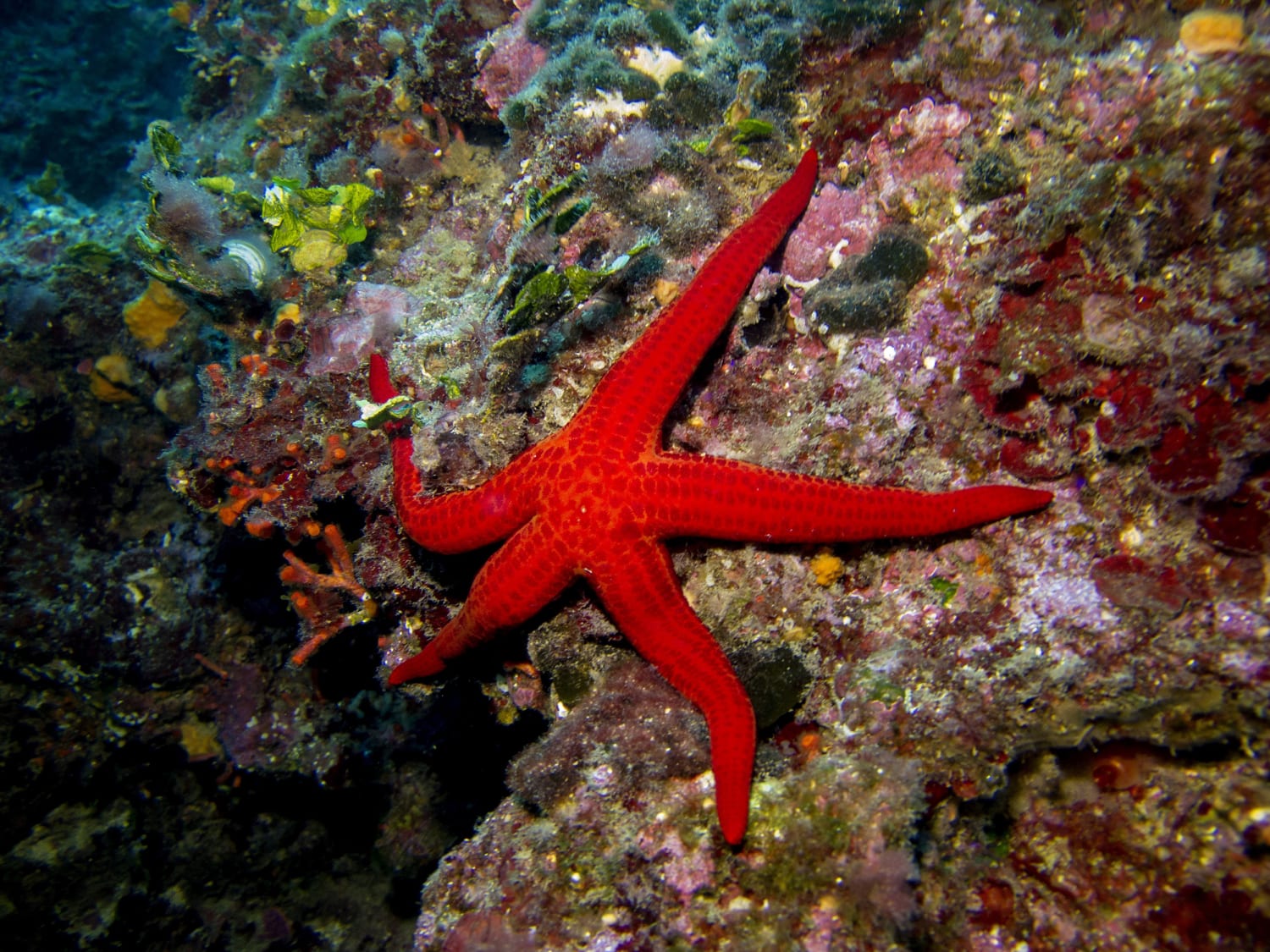A mysterious wasting disease seen in starfish around the world may be the result of respiratory distress tied to warming oceans, according to a new study. These environmental changes are likely depleting oxygen in the oceans, scientists said, causing sea stars to “drown.”
In research published online Wednesday in the journal Frontiers in Microbiology, scientists detailed cases of what’s known as sea star wasting syndrome. The disease, which causes the creature’s tissue to decay and eventually fragment, can trigger mass die-offs. Outbreaks recorded over the past seven years have even threatened some species with extinction.
Now, scientists may finally know what’s to blame: Warming ocean temperatures are fueling increases in organic material and bacteria that suck up oxygen in these watery habitats. The resulting low-oxygen environments are preventing starfish from being able to breathe properly, the researchers found.
“As humans, we breathe, we ventilate, we bring air into our lungs and we exhale,” Ian Hewson, a biological oceanographer at Cornell University and one of the authors of the new study, said in a statement. “Sea stars diffuse oxygen over their outer surface through little structures called papulae, or skin gills. If there is not enough oxygen surrounding the papulae, the starfish can’t breathe.”
Hewson and his colleagues discovered that warming conditions can lead to higher-than-usual concentrations of organic material in the ocean, which in turn allows a type of bacteria called copiotrophs to thrive. These microorganisms feed on carbon, and as they consume organic matter, they deplete oxygen in the water.
When sea stars in these environments can’t get enough oxygen, they experience respiratory distress and begin to develop the lesions characteristic of sea star wasting syndrome, according to the study.
“It’s a cascade of problems that starts with changes in the environment,” Hewson said.
Scientists have been eager to find the root cause of sea star wasting syndrome because the disease can lead to large die-offs.
“If you have a dead and rotting starfish next to starfish that are healthy, all of that dead one’s organic matter drifts and fuels the bacteria, creating a hypoxic environment,” Hewson said. “It looks like disease is being transmitted.”
Hewson added that more research is needed to better understand the ecological conditions that contribute to sea star wasting syndrome, which could include expanding studies to look at the broader domino effects.
“We should now include microorganisms that don’t directly cause the pathology, since they may hold a key to affecting sea star health,” he said.
Source: | This article originally belongs to Nbcnews.com












